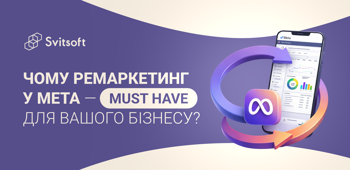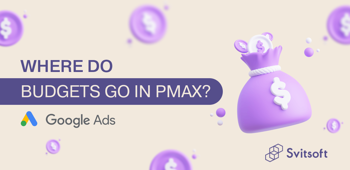Real estate is one of the most common niches for advertising campaigns and one of the most difficult in terms of decision-making and marketing funnel cycles when a potential customer becomes your buyer. That's why it's so necessary to form an Ads launch strategy correctly.
What do you need for this?
№1 To study the factors that influence the purchase.
Before starting the advertising campaign itself, be sure to study what you will advertise. At least superficially.
1) How much time a potential buyer spends on decision-making?
2) Where does he look for information about the real estate object?
3) On which documents does he pay attention?
4) How does the reputation of the real estate developer affects the decision of the potential buyer?
From all this information, you can conclude and apply the key benefits in your advertising, which would draw the user's attention.

№2 Information about the advertising campaign.
A marketer must know what to write when preparing for a real estate Ads launch. We at Svitsoft always study information about the residential complex in forums and articles. And remember to note strengths and weaknesses. A critical stage is the allocation of USP and the study of competitors.

№3 Demography of the real estate market.
The next step is to study the demographics of the potential buyer. How is look like a person who wants / can allow/considers your object for investment? All is important here: geolocation, gender, age, possible interests, marital status, position, salary level, potential problems, how this person rests, and what he does in his free time.
These data will help portray a potential buyer more accurately and reach the right target audience. Write them down for yourself in a convenient format. (PS, it will help a lot in work).

№4 Media planning.
This stage includes budget planning, advertising goal selection, launching campaign sequences, and forecasting future results. It is crucial to properly and rationally allocate the budget to campaigns. For example, if the real estate object is not well known, it will be the set of ads campaigns that include Reach, Video Views, Engagement, Page Likes, and only then Traffic or Lead Generation.
If the brand and its project are recognizable - this is an entirely different set of campaigns, which will focus more on already "warm" users familiar with the company.

№5 Audience.
The first thing to remember - Facebook Ads do not like narrow coverage. Accordingly, your audience cannot accelerate and learn to continue showing good lasting results. If you have an audience of 50,000 to 150,000 users, expand your audience or increase your budget to increase your sample size.
Second, when choosing interests for the target, remember that the target audience in the third point of this article and detailed targeting may differ. For example, we take the audience of Businessmen 25-45 with families, wives, and two children engaged in air transportation. Then the detailed targeting can collect some things in different interests because such people may also be interested in legal services, personal drivers services, or accountants. They may have a luxury car, like vacationing at ski resorts and snowboarding. The wife of such a person can buy gifts at Tiffany and spends her money on purchases on Visa or MasterCard. The wife herself regularly buys online and is probably interested in baby clothes prices on Zara Kids.
There are many examples of targeting under one audience portrait - distinguish these concepts. You don't need to focus only on a few audiences and work only with them. They burn out, and it is essential to conduct testing. Remember situational interests as a separate type of targeting.
Third, there is an opportunity to gather audiences through special advertising touches - remarketing. Then you can make them Lookalike in the ads cabinet. The most common examples are site visitors' audiences, actions in your lead form, and interactions with advertising.

№6. Texts and creatives.
One of the most important stages is the creation of advertisements. We mean the creation itself, not just writing the text to the image. It is essential to understand the pain and issues of a potential customer of your product and adequately form an advertising proposal without a lot of text and unnecessary information. Identify key benefits and suggestions, and write the right appeal. And, of course, remember that the visual part should evoke emotions, interest, and desire to read the text till the end, respond to the proposal, and leave a request. Indeed viral creatives are very well received by Facebook and generate results. Besides, such campaigns pass the approval stage faster.

№7. Lead forms.
High-quality lead forms are the key to high-quality leads. You don't have to write a million unnecessary questions, but be sure to use a specific clarifying question. So users will leave their contacts more aware. Also, remember to connect the service of unloading leads. One such tool is AdSaver. How it works: 1) Lead leaves the phone number, 2) Contacts fall immediately into the LMS system, 3) And there is an instant call. You don't have to spend time unloading leads by hand, going to different files, and then manually calling back. This tool saves you time on lead processing, and the lead itself receives information when it is still ‘warm’ — he has just left the application and has not forgotten that he filled out some forms on Facebook / Instagram.

№8. Use of external resources.
Remember to work with Google Tag Manager and Google Analytics. With the first, we can set the Pixel and timer. Also, we can track users' clicks on the site, fill out forms, scroll, and another additional micro - and macro conversions. These settings will help us gather audiences from across the website for remarketing. Analytics are needed to track the quality of traffic and the number of visits to the site exclusively from Facebook Ads. Consider session duration, bounce rate, number of users, user path, demographics, interests, and geography. Just conclude and optimize.

№9. Analysis of advertising effectiveness.
If it is possible to listen to calls - listen. It helps you understand what potential customers often ask and use it in advertising.
If your call-tracking system tracks the source of the call, it will help you understand which audiences are doing well. If this is not possible, ask for feedback about the contact. Also, analyze and draw conclusions from which audience users make more conversions and spend more time on the site.
№10. Optimization.
Optimization and testing are the keys. Test creatives, messages, CTAs, text feeds, placements, audiences, and budgets. Use trial and error to determine what works best for your account.

We wish you successful advertising campaigns!
Similar articles
All articles








